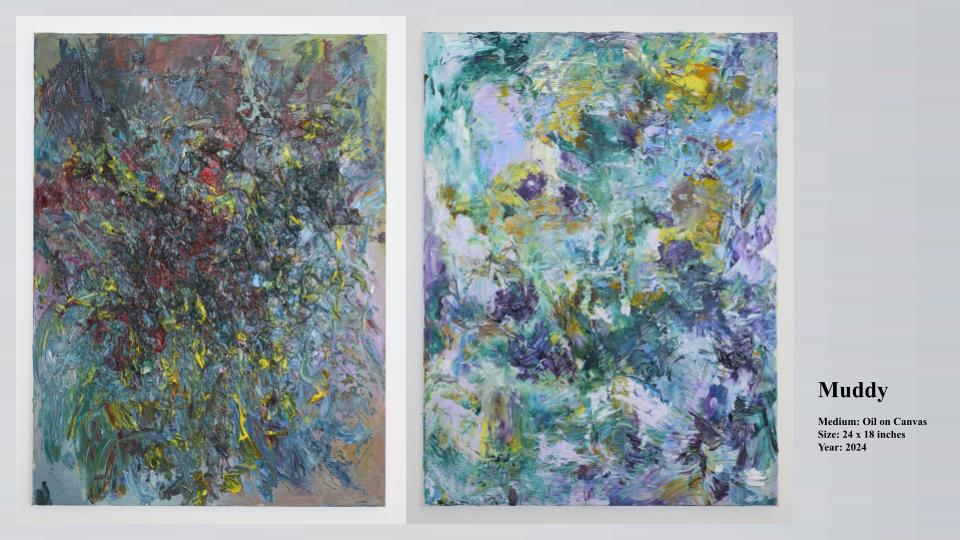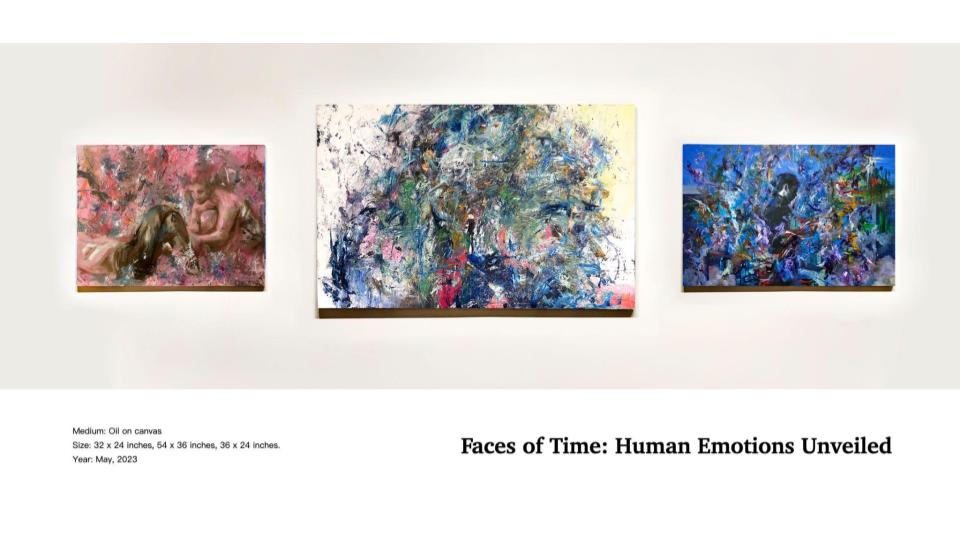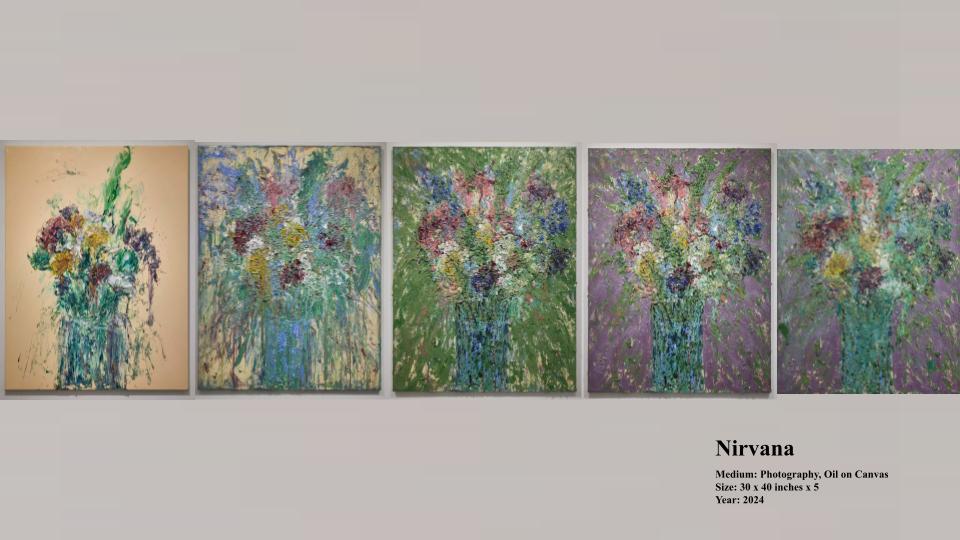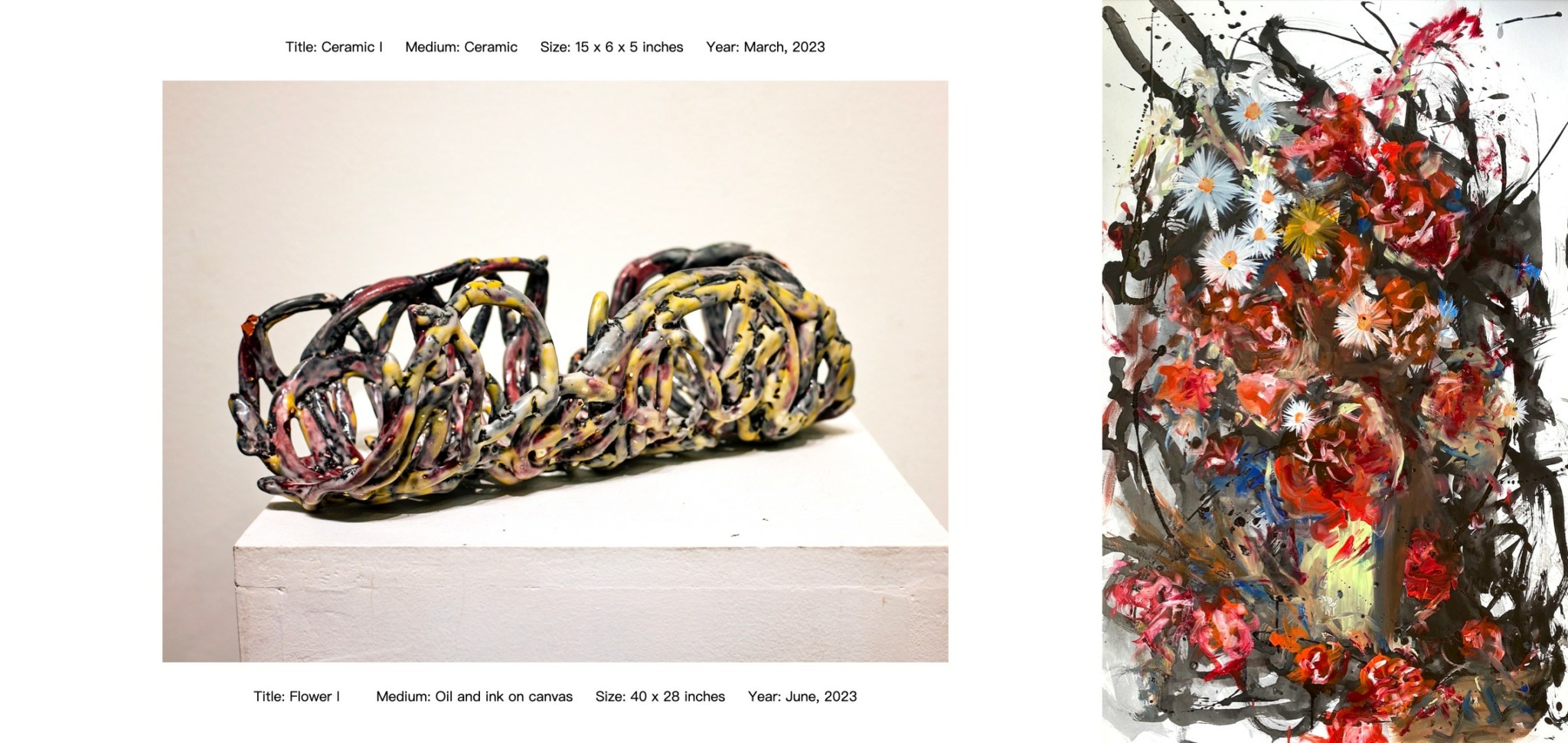We caught up with the brilliant and insightful Rainy Yuchen Wei a few weeks ago and have shared our conversation below.
Rainy Yuchen, appreciate you joining us today. What’s been the most meaningful project you’ve worked on?
The most meaningful project I’ve worked on is Floral Metamorphosis: The Art of Decay, a series I began four years ago that explores the transformation of bouquets from bloom to wither. Using thick layers of oil paint, ceramics, and later photography, I document the visual and symbolic process of decay — not just as an aesthetic change, but as a reflection on impermanence and the tension between beauty and deterioration. This project grew out of a personal fascination with how time leaves its mark on organic materials, and it became a way for me to process change and loss. As the series evolved in scale and medium, its core remained focused on capturing the fleeting nature of life. It’s meaningful to me because it has become both a long-term creative investigation and a deeply personal meditation on transformation, inspired by natural cycles and echoed in broader contemporary conversations around materiality, land, and endurance.


Rainy Yuchen, love having you share your insights with us. Before we ask you more questions, maybe you can take a moment to introduce yourself to our readers who might have missed our earlier conversations?
My name is Rainy Yuchen Wei, and I’m an artist working primarily in painting and ceramics. I’m currently based in New York, where I’m pursuing my MFA in Painting at Pratt Institute. Originally from Vancouver, I moved to the U.S. at 18 to study studio art at NYU, and my path into the art world has been one of ongoing exploration through both material and meaning.
My creative work centers on transformation, impermanence, and the poetic tension between beauty and decay. I’m particularly interested in how organic forms — flowers, skin, soil, bone — hold emotional and symbolic weight. My long-term series, Floral Metamorphosis: The Art of Decay, documents the life cycle of floral arrangements, using heavy impasto oil paint, marble dust, ceramics, and photography to explore change, loss, and endurance. I also maintain a separate body of research into materiality itself — experimenting with encaustic, wax, and texture — seeking ways to give visual form to the ephemeral.
What sets my work apart is its commitment to slowness and intimacy: I often work in series that take months or years to complete, allowing the work to shift and respond to my environment and internal state. I approach each medium as a living language, not just a tool — whether it’s building layered surfaces with oil and marble dust, firing glazed ceramics, or capturing decay through time-lapse photography.
In addition to creating artwork, I’ve worked for galleries and organizations as a translator and writer, and contributed to artist publications. I’ve learned so much about the industry in P.P.O.W. gallery and Franklin Furnace Archive, Inc.. I recently began researching art education methods, particularly in foundational drawing courses. These academic and editorial extensions of my practice allow me to remain engaged with the art world beyond the studio.
I’m most proud of the way my work creates space for contemplation and for honoring what often goes overlooked — the quiet processes of change, grief, and regeneration. For those discovering my work, I hope it offers a sense of recognition: that even in decay, there is clarity, complexity, and beauty.


Any insights you can share with us about how you built up your social media presence?
Earlier this year, when TikTok faced the possibility of being banned, a platform called Rednote suddenly gained popularity across North America — and that’s where my social media audience really started to grow. One of my posts unexpectedly went viral: I shared my experience as an international student navigating the cultural shifts after a major election. The story included how one of my professors, sensing how emotionally drained the class was, allowed us to bring alcohol to class for one session so we could decompress and just talk. It was unexpected, eye-catching, and deeply human — and it resonated with people.
Once I saw how easily a single post could gain traction, I started thinking about how to connect that exposure to something I love: nail art. I had been doing my own nails for about two years, partly because it was cheaper and partly because, as an artist, I could bring my own aesthetic to it. I began offering nail art to others and used Rednote to connect with potential customers. The platform helped me turn a personal passion into something profitable while continuing to refine my skills.
My advice for those starting to build a social media presence is this: always be kind and stay grounded. You’ll inevitably face negative comments, and it’s important not to let them throw you off. Maintaining a polite and composed attitude goes a long way in building long-term trust and respect. Also — don’t be afraid of a little clickbait! I’ve used titles like “OMG! Who still doesn’t know about BK FREE nail art done by a painting artist?” Be consistent, stay true to your voice, and remember that a platform can be more than just exposure — it can be a tool for creative connection and growth.


Is there something you think non-creatives will struggle to understand about your journey as a creative? Maybe you can provide some insight – you never know who might benefit from the enlightenment.
One thing I think non-creatives often struggle to understand is that abstract work, especially painting, is not just about aesthetics or technique — it’s deeply personal, and often misunderstood. People sometimes look at my paintings and say, “This is just a few brushstrokes,” or “It’s just layered paint,” without realizing the emotional and psychological weight behind those marks. Abstraction isn’t meant to give easy answers. It’s how I process experiences that are too complex or fragmented for words — and often, it’s how I talk to myself when no one else can fully understand.
As a Chinese person who lived in Canada from age 12 to 18, and then in New York from 18 to 25, my life has been segmented by geography, culture, and language. That sense of dislocation is at the core of my painting. My painting Uprooting, 2024 is about trying to uproot a plant from one soil and forcing it to grow in another. Hoping it’ll thrive, but knowing it may never truly belong. For a long time, I believed that time or distance would eventually reconcile these fragmented parts of me. But I’ve learned that the gaps don’t just disappear because you run farther or adapt faster.
Living continents away from my family, I’ve had to learn to speak to myself, to care for the parts of me that were shaped by different places. My painting is one of those voices. It’s a language of uprooting and re-rooting — of accepting new identities and finding healing in places that don’t always feel like home. My heart holds the memories from many places, and over time, I’ve come to see that as a strength. I’m no longer afraid of walking alone.
Contact Info:
- Website: https://www.channelorange.me/
- Instagram: rainy_wei
- Linkedin: https://www.linkedin.com/in/rainy-yuchen-wei/


Image Credits
Photos by Draven Zhao


